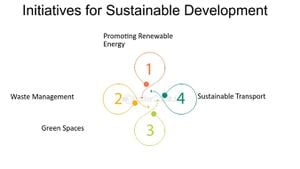Imagine powering your favorite gadgets with a battery that can function in extreme conditions, from frigid cold to sweltering heat. A breakthrough in battery technology—the new quinary electrolyte known as ZGBCP—does just that. Developed for aqueous zinc metal batteries (AZMBs), this innovative electrolyte showcases remarkable stability and efficiency at temperatures ranging from -50°C to +100°C, offering a bright glimpse into the future of energy storage solutions.
The reliance on traditional batteries with limited temperature ranges has led to many challenges in energy storage, from capacity drops in the cold to increased degradation under heat. However, the development of the ZGBCP electrolyte, which stands for zinc (Zn) boric acid-glycerol-chitosan-polyacrylamide, marks a significant advancement. What sets this electrolyte apart is its ability to effectively manage both zinc cation (Zn2+) and anion (BF4-) solvation structures, which are typically culprits of side reactions that decrease battery efficiency, such as hydrogen evolution reactions (HER) and dendrite formation.
The journey to create this cutting-edge electrolyte involved a multifaceted approach, integrating glycerol and boric acid, which play key roles in enhancing solvation structures. This not only allowed for superior ionic conductivity but also created an exceptionally strong adhesion interface critical for battery stability.
Historically, zinc metal batteries have struggled with poor cycling stability and limited operational temperature windows, primarily due to unwanted side reactions caused by the solvation effect of water molecules around zinc ions. These solvation structures were largely unregulated in previous models, resulting in high energy losses and poor performance. Previous research often focused on cation solvation, neglecting the significant role that anionic structures play in overall battery functionality. Recognizing the symmetry of these structures is what inspired the holistic design of the ZGBCP electrolyte, targeting both components simultaneously.
The meticulous design process for this electrolyte spanned several stages. The first step in the synthesis involved mixing glycerol and deionized water, both essential for the development of robust solvation structures. This combination was heated and subjected to careful stirring before other components, like boric acid and deacetylated chitosan, were added, allowing for their full integration without any insoluble particles. The latter steps introduced polyacrylamide and a rated crosslinking agent, creating a gel-like structure under UV light that bolstered mechanical and thermal stability.
To fully appreciate the improvements brought about by ZGBCP, one must understand the critical difference in solvation structures and their effects on battery performance. Traditional aqueous electrolytes faced significant challenges due to the strong tendency of water molecules to interact with both the cations and anions. In contrast, the ZGBCP electrolyte facilitates enhanced ionic interactions, leading to lower polarization and reduced incidence of side reactions during battery operation. This advantage allows for fast charge-discharge cycles and prolonged lifespan, with recorded cycling stability exceeding 30,000 cycles—truly astonishing for any battery technology.
One of the standout features of the ZGBCP electrolyte is its dual cross-linking network established via esterification, protonation, and polymerization reactions. These unique chemical interactions not only promote greater ion mobility but also establish a robust mechanical structure that withstands extreme thermal conditions. With an ionic conductivity measured at 28.7 mS/cm, the electrolytes show numbers comparable to existing standards but shine in their temperature tolerance, maintaining good performance even in the most adverse conditions.
What do these findings mean in practical terms? For consumers, this could lead to the next generation of batteries that last longer and function better under varying climates and conditions—imagine electric vehicles optimized to run in snowy mountains and sweltering deserts without performance drops. For industries relying on energy storage solutions, the implications are equally profound, as the enhanced reliability of AZMBs could usher in a new era of clean energy, paving the way for broader adoption of renewable resources.
In regards to the specific findings of the research, the ZGBCP electrolyte demonstrated significant enhancements in terms of both kinetic performance and durability. With tests revealing an ultralow polarization voltage of just 268 mV at a current density of 30 mA/cm2, coupled with a stable cycling performance beyond 3000 hours at the same current density, the performance metrics suggest that the ZGBCP electrolyte will revolutionize the field. Following these tests, the product’s efficiency was validated through rigorous electrochemical analysis known as cylic voltammetry (CV), which confirmed consistent and predictable performance under varied stress conditions.
One potential drawback to consider, however, is the scalability of this technology. While the results are promising, constructing these high-performance electrolytes on a mass production scale could present challenges in maintaining the same level of performance. It’s essential for future research to explore this aspect further, ensuring that the transition from laboratory conditions to real-world production doesn’t compromise quality or efficacy.
As this research indicates, the potential for future advancements in battery technologies is extraordinary. Looking ahead, future studies could focus on refining the synthesis process for even greater efficiency or probing deeper into the molecular interactions within the solvation structures to derive further enhancements. Architects of this leading-edge electrolyte are also encouraged to explore its applications beyond AZMBs, such as in electric vehicles or grid storage solutions, especially those demanding high-performance under extreme conditions.
In conclusion, the ZGBCP electrolyte represents a pioneering leap forward in the quest for stable and reliable battery technologies. With its exceptional operational range and remarkable cycle lifespan, it provides a transformational understanding of how we can design and optimize battery systems to meet the needs of the future. As researchers continue their quest to build on this foundation, the dream of longer-lasting, more efficient, eco-friendly energy storage solutions inches closer to reality, promising a brighter and more sustainable tomorrow.
In the words of the authors, "the feasibility of the dual solvation structure strategy...provides a new perspective for the development of high-performance AZMBs," signifying that we are on the cusp of remarkable developments in this vital field.



